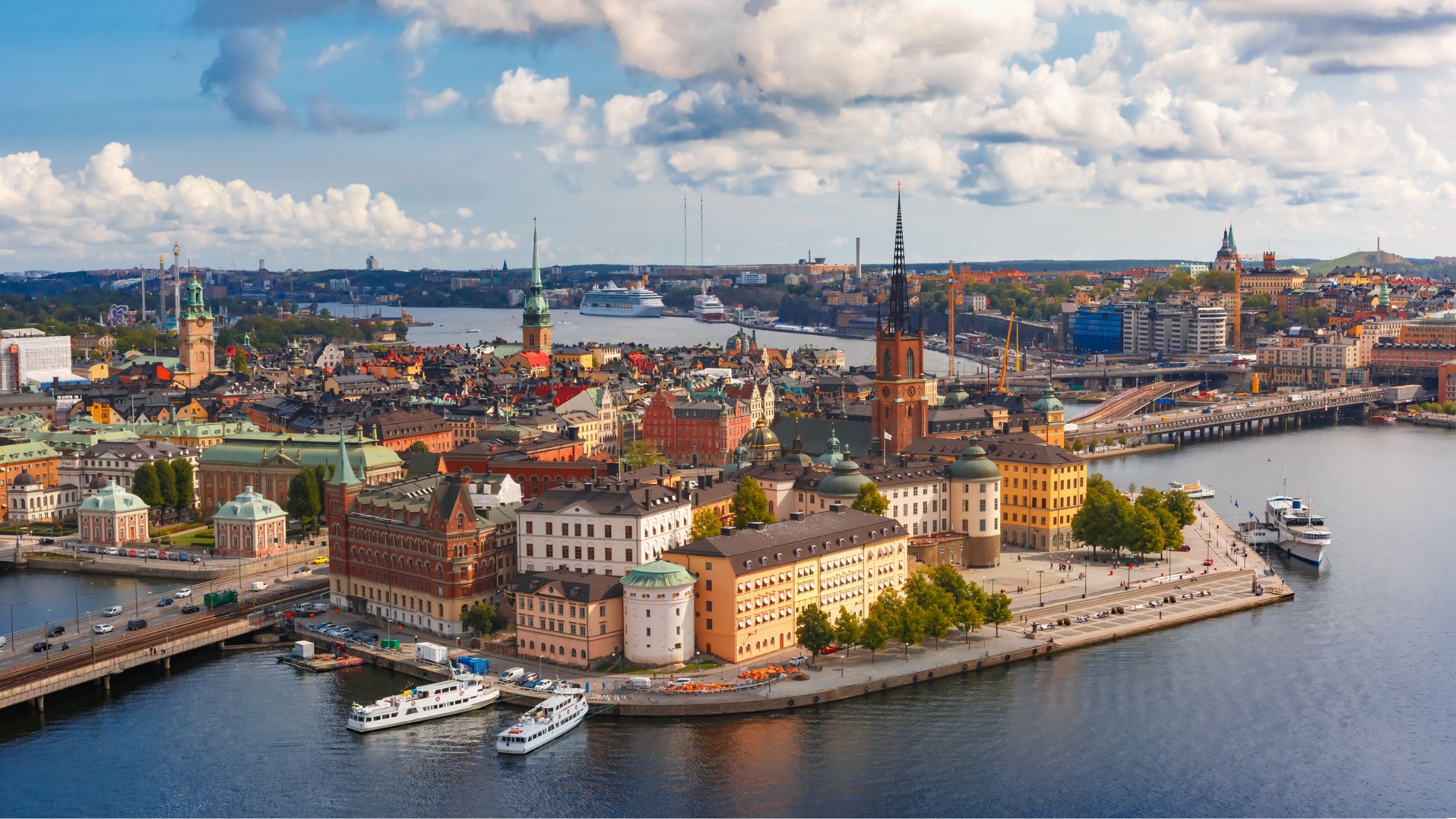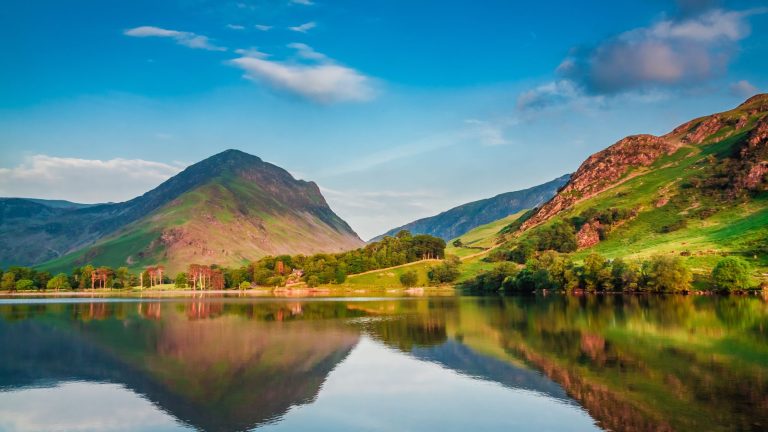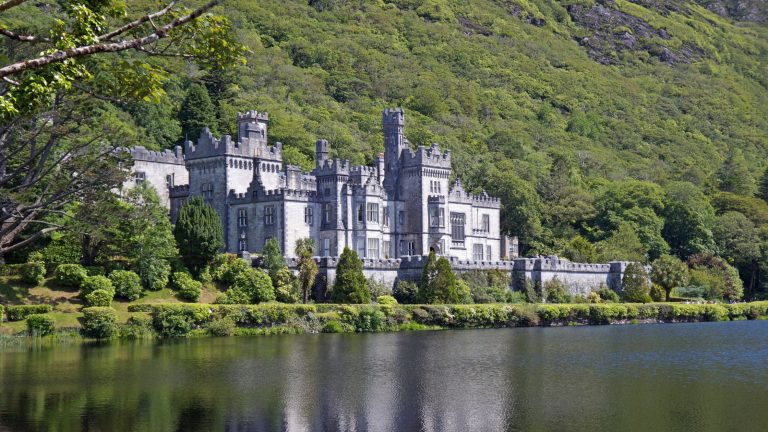Sweden beckons families with an extraordinary blend of pristine wilderness, crystal-clear lakes, and world-class attractions that transform every season into an adventure playground.
From the Stockholm archipelago’s 30,000 islands to Swedish Lapland’s Arctic wonders, this Scandinavian gem offers year-round experiences where children paddle through glassy waters, explore fairytale castles perched on lakeshores, and discover Nordic wildlife in their natural habitats.
The country’s commitment to accessible outdoor spaces means you can kayak through the world’s largest freshwater archipelago one day and ride Sweden’s newest amusement park attraction the next, including Gröna Lund’s thrilling Spindeln ride launching in Summer 2026.
With free national park access, family-friendly infrastructure, and the Swedish tradition of “allemansrätten” (everyman’s right to roam), Sweden makes outdoor exploration safe, affordable, and unforgettable for families seeking authentic connections with nature alongside cultural enrichment.
Start your list of must-dos with your family with our top things to do in Sweden guide!
What makes Sweden’s lakes and waterways perfect for families?
Sweden’s inland seas and canal systems create an aquatic playground where families discover centuries-old traditions alongside modern adventures. Lake Vänern, the European Union’s largest lake spanning 5,655 square kilometers, feels more like an inland ocean with its 22,000 islands creating the world’s largest freshwater archipelago.
You can spend entire days island-hopping by boat, discovering secluded sandy beaches where shallow, child-friendly bays warm quickly under the midnight sun. The water quality ranks among the world’s best—so pristine that in many lakes you can dip your coffee pot directly into the water and drink safely.
The magnificent Göta Canal stretches 190 kilometers from Gothenburg to Stockholm, connecting the lakes Vänern and Vättern through 66 hand-carved locks that fascinate children as they watch water levels rise and fall with mechanical precision. Historic canal boats like the M/S Juno, operating since 1869, glide at a peaceful six-kilometer-per-hour pace that allows your family to walk alongside on car-free towpaths. During the 99-year tradition of canal travel, villagers serenade passing boats while passengers wave white handkerchiefs—a charming ritual that transports you to simpler times. Three-course dinners feature ingredients grown in regions you’re floating through, and the nostalgic cabins with coal-grey blankets create cozy retreats after days exploring lock staircases like the famous Berg locks with seven connected chambers.
Lake Vänern’s crown jewel, Läckö Castle, rises dramatically from the Kållandsö peninsula in white Baroque splendor voted Sweden’s most beautiful castle. Your children explore 240 rooms spanning 700 years of history, from medieval dungeons to the spectacular King’s Hall where 13 carved angels hang from painted ceilings above epic battle scenes. Guided tours in English run throughout summer, and afterward your family can hike the four-kilometer Roparudden Path offering postcard-perfect castle viewpoints, or paddle through surrounding waters on guided kayaking excursions. The Little Castle Garden cascades down terraced levels planted with fragrant herbs used in the castle restaurant, where you dine overlooking Lake Vänern’s glittering expanse. Children under 26 enter free, making this UNESCO Biosphere Reserve location both enriching and affordable.
In Dalarna’s heartland, Lake Siljan embodies quintessential Swedish summer with red wooden cottages reflected in calm waters and flower-filled meadows rolling toward forested slopes. This 290-square-kilometer lake serves as the cultural epicenter where iconic Dala horses originated and authentic Midsummer celebrations transform villages like Leksand and Rättvik into festivals of traditional music and dancing around decorated poles. Rättvik’s spectacular 600-meter wooden pier—one of the world’s longest—extends into the lake lined with lanterns that create magical evening walks as sunset paints the water gold and pink.
The Dalsland Canal system north of Gothenburg offers “wilderness light”—authentic backcountry experiences with convenient amenities nearby. Over 22,000 islands dot this 10,000-square-kilometer network of deeply cut, narrow lakes surrounded by heavily forested hills. You paddle Canadian canoes along calm waters ideal for beginners, stopping at 100-plus prepared nature camps equipped with wind shelters, fire pits with supplied firewood, and environmentally friendly toilets. The Nature Conservation Card unlocks free camping throughout this system, and rangers throughout provide assistance and information. Long, narrow lake configurations mean minimal waves even when breezes pick up, and portages between connected waters rarely exceed two kilometers with provided canoe trolleys making transport manageable for families.
How can families experience the Swedish archipelago?
The Stockholm archipelago extends like a watery labyrinth from the capital eastward into the Baltic Sea, where 30,000 islands create endless exploration opportunities accessible by public ferry. Waxholmsbolaget operates 32 ferry routes serving 237 stations year-round, transforming island-hopping into affordable adventures using regular SL public transport tickets. The charming town of Vaxholm, nicknamed the archipelago capital, sits just one hour from central Stockholm via the number 83 ferry line, greeting families with pastel houses, fortress museums, and waterfront restaurants serving fresh Baltic herring and Swedish meatballs. If you’ve only ever eaten Swedish meatballs in an IKEA, you’re in for a treat!
Closer islands like Fjäderholmarna reach in just 30 minutes, perfect for half-day excursions combining nature walks with artisan workshops and cafés. Summer weekends bring vintage steamboats chugging through the islands with nostalgic atmosphere and sometimes engine room tours that delight mechanically curious children. You explore car-free islands by foot or bicycle, discovering hidden coves for swimming where July and August water temperatures reach comfortable 60-degree ranges. Pack picnics since smaller islands offer limited services, and always check timetables in advance—though the rhythmic ferry schedule itself becomes part of the archipelago experience, teaching patience and planning while surrounded by stunning Nordic seascapes.
Sweden’s High Coast: Where mountains meet the sea
UNESCO World Heritage Skuleskogen National Park showcases the world’s highest coastline, where red Nordingrå granite mountains plunge 300 meters into the Baltic Sea and continue rising eight millimeters annually through post-glacial rebound. Thirty kilometers of marked trails wind through old-growth forests to dramatic geological features like Slåttdalsskrevan—a 200-meter-long, 40-meter-deep natural canyon carved through solid rock that feels like entering earth’s secret chambers. Children scramble through the seven-meter-wide passage with wonder, emerging to climb Slåttdalsberget mountain for panoramic views across forested islands scattered like emeralds on sapphire waters.
The park’s three entrances offer varying difficulty levels, with the West Entrance featuring wheelchair-accessible paths suitable for strollers and easy loops around Långtjärnhällorna’s smooth rock formations. Families following trails to Tärnättholmarna discover peninsulas with sandy beaches perfect for swimming breaks during summer hikes, while overnight cabins and free designated camping areas let you extend stays under star-filled northern skies. Moose tracks crisscross paths, and white-tailed eagles soar overhead—wildlife encounters that make Swedish nature feel vast and thrilling even from safe, well-marked trails.
Adjacent Skuleberget mountain hosts Europe’s largest Via Ferrata center, where steel cables fixed to the 250-meter east face create protected climbing routes requiring no previous experience. Four color-coded routes range from the family-friendly White Route with roomy ledges to the extreme Black Route’s 18-meter overhanging wall. Children meeting the 40-kilogram minimum weight requirement can attempt routes with one-on-one adult supervision, equipped with professional-grade helmets, harnesses, and carabiners that clip onto anchor points every few meters. The experience combines adventure with safety, teaching confidence and problem-solving while adrenaline surges during exposed traverses where Baltic breezes cool your efforts and views extend across the entire High Coast World Heritage landscape.
Major family attractions with exciting 2026 updates
Gröna Lund amusement park transforms Stockholm’s Djurgården Island waterfront into Sweden’s most thrilling entertainment destination, where historic charm dating to 1883 blends with cutting-edge attractions. Summer 2026 brings the highly anticipated Spindeln (The Spider)—Sweden’s first Super Jumper ride featuring 42 seats on 14 spinning “legs” that bounce, spin, and accelerate to 12 rotations per minute while generating three G-forces. This world-first design incorporates over-the-shoulder restraints allowing children as young as four years old (with adults) to experience the excitement safely. The queue winds through a witch’s garden themed with mysterious greenery and hidden surprises, building anticipation before you board this Italian-engineered marvel positioned between the suspended Kvasten family coaster and the ghostly Blå Tåget.
Beyond Spindeln, Gröna Lund’s 27-plus attractions include eight roller coasters from gentle carousels to the 90-kilometer-per-hour Monster that roars along waterfront tracks. The compact size means families walk easily between rides without exhausting little legs, and remarkably, children under three enter free with unlimited rides included. Admission-only tickets cost just 100 SEK while full-day ride passes start at 395 SEK, with season passes providing incredible value at 420 SEK for unlimited visits through the April-to-September season. Fifty-plus summer concerts transform evenings into festivals of music drifting across Stockholm’s harbor.
Nearby Skansen open-air museum, the world’s oldest at 134 years, preserves 150-plus historic buildings from across Sweden where interpreters in period dress demonstrate traditional crafts from glassblowing to weaving. Your family encounters brown bears, wolves, lynx, moose, and wolverines in the Nordic Zoo, while Lill-Skansen children’s area offers petting experiences with rabbits and miniature pigs. Summer admission runs 285 SEK for adults but just 85 SEK for children aged 4-15, with children under four years of age entering for free. The Baltic Sea Science Center’s aquariums showcase underwater ecosystems, and hilltop locations provide spectacular Stockholm vistas that make lunch breaks feel like scenic interludes.
The magnificent Vasa Museum houses the world’s only preserved 17th-century warship, the Vasa, which sank on its 1628 maiden voyage and spent 333 years underwater before salvage. Seven viewing levels surround this 98-percent-original vessel with its 64 cannons and intricate carvings, creating a time capsule children explore via free audio guides designed specifically for ages 8-12 that tell the story of Olof, a shipyard worker. Remarkably, all visitors under 18 enter free, making this world-class maritime museum extraordinarily affordable. Summer hours extend from 8:30 AM to 6:00 PM daily, and 30-minute guided tours in English help families understand the extraordinary preservation achievement.
Go City Stockholm passes bundle these attractions with 50-plus others including hop-on hop-off buses and boats, creating flexible itineraries that maximize sightseeing while minimizing ticket hassles. Passes valid for one to five consecutive days start around 999 SEK—paying for themselves after visiting just Vasa, Skansen, and taking a boat tour while providing access to dozens more experiences. The digital QR-code system means scanning into attractions without queuing at ticket counters, particularly valuable when traveling with impatient children eager to start exploring.
Kolmården Wildlife Park, Scandinavia’s largest zoo 150 kilometers south of Stockholm, houses 750-plus animals from 85 species across 1.5 square kilometers of countryside overlooking Bråviken bay. Sweden’s only gorillas live here alongside tigers, elephants gifted by Thailand’s king, and extensive savannah areas where giraffes, zebras, and antelopes roam visible from the world’s first cable car safari. Pre-booking the Safari Gondola for 249 SEK ensures your family of up to eight glides quietly above lions and bears without hour-long queues, while audio commentary explains animal behaviors. The park’s Wildfire wooden roller coaster, voted world’s best, reaches 115 kilometers per hour through multiple inversions creating 12 moments of weightlessness—Europe’s fastest and highest wooden coaster that older children and thrill-seeking parents conquer together.
Gothenburg’s Universeum science center combines Sweden’s largest aquariums with an 18,000-cubic-meter indoor rainforest where sloths, marmosets, and toucans roam freely among humid vegetation. You walk through shark tunnels observing eight shark species including sand tigers gliding overhead, then ascend through rainforest levels from Andes to Amazon while butterflies flutter past and exotic birds call from canopy branches. Interactive chemistry labs, space stations, and crime scene investigations make learning feel like play, while Miniverseum offers age-appropriate activities for children under six. Entry runs approximately 175-200 SEK for adults and 120-160 SEK for children aged 3-16, with under-threes free—representing excellent value for four to five hours of engaging, educational entertainment perfect for rainy days.
Arctic adventures and year-round mountain activities
Swedish Lapland transforms family travel into Arctic expeditions where northern lights dance across winter skies and midnight sun illuminates summer hikes through wilderness few places match. Abisko National Park, 200 kilometers north of the Arctic Circle, sits beneath the “Blue Hole of Abisko”—a unique microclimate creating exceptionally clear skies that make this the world’s premier northern lights viewing location. The Aurora Sky Station atop 900-meter Mount Nuolja reaches via 25-minute chairlift for nighttime viewing from November through March, providing warm overalls and boots alongside traditional coffee and three-course dinners as you watch green curtains shimmer overhead.
Summer transforms Abisko into hiking paradise with 475 kilometers of marked trails including the family-friendly five-kilometer Njakajaure Nature Trail featuring wooden boardwalks through canyons to marble quarries and Sami camps. Children spot moose tracks, arctic hares, and if fortunate, the elusive lynx, while mountain flora including rare orchids blankets slopes nicknamed “flower mountain.” The park’s three entrance points offer varying difficulty levels, with some trails accessible to wheelchairs and strollers. Free admission makes this UNESCO World Heritage landscape accessible to all families, and the Naturum visitor center provides exhibitions explaining geological and biological wonders.
The legendary ICEHOTEL in Jukkasjärvi village, 17 kilometers from Kiruna, rebuilds annually using ice from the Torne River to create 6,000 square meters of frozen artistry where international sculptors design approximately 50 unique suites. Families can experience one night in expedition-grade sleeping bags on ice beds covered with reindeer hides inside rooms maintained at minus-five degrees, then retreat to warm Nordic Chalets with two bedrooms sleeping four in Scandinavian comfort. Children aged eight and older learn ice sculpting techniques using the same crystal-clear ice forming hotel walls, creating their own sculptures under professional instruction.
The permanent ICEHOTEL 365 section operates year-round using solar power from midnight sun to maintain minus-five-degree temperatures, meaning you can experience ice artistry even during summer visits when outside temperatures reach comfortable levels. This juxtaposition of walking from warm summer sunshine into frozen galleries feels surreal and magical. Dog sledding across snow-covered forests, reindeer encounters with Sami herders sharing indigenous culture, and ice fishing on frozen lakes fill itineraries with authentic Arctic experiences that create lifelong memories and appreciation for northern ecosystems.
Åre ski resort, Sweden’s largest and highest-rated, provides Scandinavia’s premier family skiing across 89 slopes spanning 91 kilometers with 47 lifts connecting three zones. The dedicated Åre Björnen area five kilometers east specifically caters to families with gentle green slopes, Valle the Snowman mascot entertaining children, and magic carpets replacing intimidating chairlifts for beginners. Meanwhile, confident skiers tackle Åreskutan’s 870-meter vertical drop—Northern Europe’s biggest—while intermediate family members explore Duved’s wide, cruisey red runs. Remarkably, children under seven ski free when wearing required helmets, and English-speaking ski school instructors provide patient, fun-focused lessons starting from age three.
SkiStar’s mobile app lets you purchase and manage passes digitally, avoiding ticket window crowds, while free ski buses connect all areas included in single-pass access running throughout operating hours. The 2025-2026 season opens December 12 and extends through early May with night skiing during peak periods. Summer transforms Åre into mountain biking mecca with Scandinavia’s largest bike park offering 50 kilometers of trails and 853 vertical meters of lift-accessed descent, alongside via ferrata climbing, paragliding, and 475-plus kilometers of hiking trails that summit Åreskutan via cable car for panoramic views across Jämtland wilderness.
Creating your Swedish family adventure
Sweden’s genius lies in making outdoor exploration accessible—national parks charge no entry fees, public ferries cost the same as city buses, and the cultural principle of allemansrätten guarantees your right to camp, pick berries, and explore private land responsibly. This democratic approach to nature means families on any budget can paddle the Dalsland Canal’s 22,000 islands, hike Skuleskogen’s dramatic coastline, or watch moose graze in Abisko without breaking vacation budgets. Meanwhile, attractions like Gröna Lund’s new Spindeln ride, Läckö Castle’s Baroque splendor, and ICEHOTEL’s frozen artistry provide world-class experiences worth every krona.
Summer months from June through August offer warmest weather, longest days, and full operational schedules across attractions and ferries, though prepare for crowds at popular destinations like Kolmården Wildlife Park. Shoulder seasons in May and September deliver quieter experiences with mild temperatures and fall colors painting lake shores in spectacular gold and crimson hues. Winter opens entirely different adventures from northern lights viewing to skiing Åre’s slopes, with December’s early darkness creating cozy hygge moments in warm lodges after active days.
Sweden welcomes families with infrastructure designed for convenience: stroller-accessible trails, children-free admissions at major museums, and English-speaking staff throughout tourism sectors. The cultural values of safety, quality, and sustainability mean attractions maintain high standards while respecting natural environments that define Swedish identity. Whether you’re seeking adrenaline on via ferrata routes and roller coasters, tranquility paddling through midnight sun reflections, or education exploring Viking ships and Arctic ecosystems, Sweden’s year-round offerings create family adventures where every member discovers their element.
Start planning your 2026 Swedish odyssey now to experience Spindeln’s debut at Gröna Lund alongside timeless experiences in landscapes that have captivated travelers for generations. Your family will return home with sun-kissed memories of island picnics, proud accomplishments scaling granite cliffs, wonder at northern lights dancing overhead, and deeper appreciation for how seamlessly Sweden blends outdoor adventure with cultural richness, all wrapped in the warmth of Scandinavian hospitality that makes visitors feel genuinely welcome in this corner of the world where nature and family joy intertwine beautifully.






